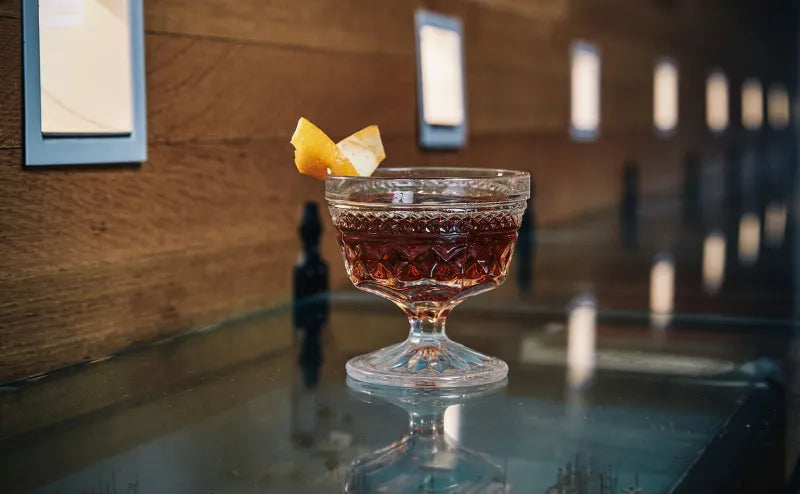
The History of the 1910 Cocktail: Origins, Legacy, and a Traditional Recipe
Share

The History of the 1910 Cocktail: Origins, Legacy, and a Traditional Recipe
The world of cocktails is steeped in history, with many iconic drinks tracing their roots to pivotal moments or cultural movements. One such libation, the 1910 Cocktail, stands out not only for its bold flavors but also for its intriguing connection to a transformative era in Mexican history. In this deep dive, we’ll explore the origins of the 1910 cocktail, its ties to the Mexican Revolution, and how to craft this timeless drink using traditional methods.
The Historical Context: Mexico in 1910
The year 1910 marked the beginning of the Mexican Revolution, a decade-long struggle that reshaped the nation’s political and social landscape. Against this backdrop of upheaval and change, the 1910 cocktail emerged as a symbol of resilience and celebration. While its exact origins are debated, historians and mixologists often link the drink to this era, when Mexico’s cultural identity—and its beloved spirit, tequila—began gaining international recognition.
Some accounts suggest the cocktail was crafted in Mexico City to honor the revolutionary spirit, blending local ingredients like tequila with European imports such as grenadine. Others theorize it was popularized in border towns, where American and Mexican influences merged. Regardless of its birthplace, the 1910 cocktail embodies the fusion of tradition and innovation that defined early 20th-century Mexico.
Decoding the 1910 Cocktail: Ingredients and Symbolism
The 1910 cocktail is a sophisticated balance of sweet, tart, and herbal notes. Its recipe reflects the resourcefulness of the time, combining accessible ingredients with bold flavors:
- Tequila: As Mexico’s national spirit, tequila anchors the drink. Early recipes likely used a blanco (silver) tequila, prized for its crisp, agave-forward profile.
- Lime Juice: Fresh citrus was a staple in Mexican cuisine and mixology, adding brightness to counteract the spirit’s intensity.
- Grenadine: This pomegranate syrup, though of Middle Eastern origin, became popular in pre-Prohibition cocktails and lends the 1910 its signature ruby hue.
- Orange Liqueur: Often Cointreau or triple sec, this ingredient nods to European influences and adds a subtle sweetness.
- Soda Water: A splash effervesces the drink, making it refreshing and approachable.
The combination of these elements mirrors the cultural crossroads of 1910s Mexico—a nation embracing its heritage while engaging with global trends.
Traditional 1910 Cocktail Recipe
Yield: 1 serving
Ingredients:
- 2 oz (60 ml) blanco tequila
- 1 oz (30 ml) fresh lime juice
- 0.5 oz (15 ml) orange liqueur (Cointreau or triple sec)
- 0.5 oz (15 ml) grenadine syrup (preferably homemade*)
- 1 oz (30 ml) soda water
- Ice (cubed or crushed)
- Garnish: Lime wheel or orange twist
Instructions:
- Chill the Glass: Begin by filling a highball or Collins glass with ice to chill it. Discard the ice before building the drink.
- Shake the Base: In a cocktail shaker, combine tequila, lime juice, orange liqueur, and grenadine. Add ice and shake vigorously for 15–20 seconds until well-chilled.
- Strain and Top: Strain the mixture into your prepared glass over fresh ice. Gently top with soda water and stir once to integrate.
- Garnish and Serve: Add a lime wheel or orange twist for a vibrant finish.
Pro Tip:
Homemade grenadine elevates the drink. Simmer 1 cup pomegranate juice with 1 cup sugar until dissolved, then cool and add 1 tsp orange blossom water (optional).
Legacy and Modern Interpretations
While the 1910 cocktail faded into obscurity mid-century, modern mixologists have revived it as part of the craft cocktail renaissance. Bartenders today experiment with aged tequilas (reposado or añejo) for deeper complexity or add chili-infused syrups for a spicy kick. Yet the core elements—tequila, citrus, and grenadine—remain a tribute to its revolutionary roots.
The drink also holds cultural significance as a bridge between Mexico’s past and present. It’s a staple in bars celebrating Dia de los Muertos or Mexican Independence Day, often paired with stories of Pancho Villa and Emiliano Zapata, icons of the 1910 Revolution.
Why the 1910 Cocktail Endures
The 1910 cocktail is more than a drink—it’s a liquid artifact of a nation in flux. Its simplicity and versatility make it accessible to home bartenders, while its history invites curiosity. Whether enjoyed as a refreshing highball or a nuanced sipper, the 1910 invites us to toast to resilience, heritage, and the art of mixology.
Final Serving Suggestion: Pair your 1910 cocktail with traditional Mexican botanas (snacks) like spicy peanuts, ceviche, or fresh guacamole to enhance the experience.
By mastering the 1910 cocktail, you’re not just mixing a drink—you’re preserving a piece of history. Salud! 🍹